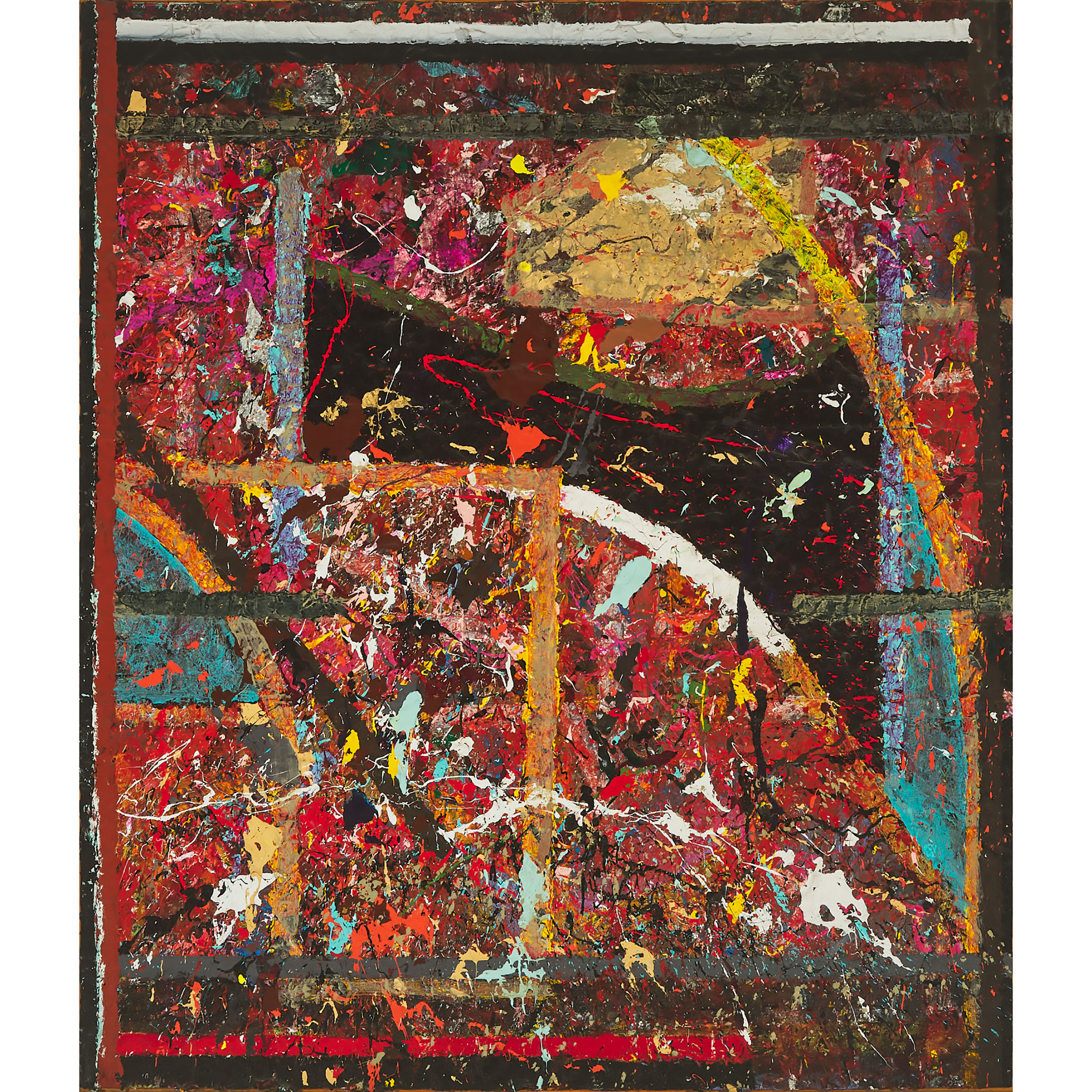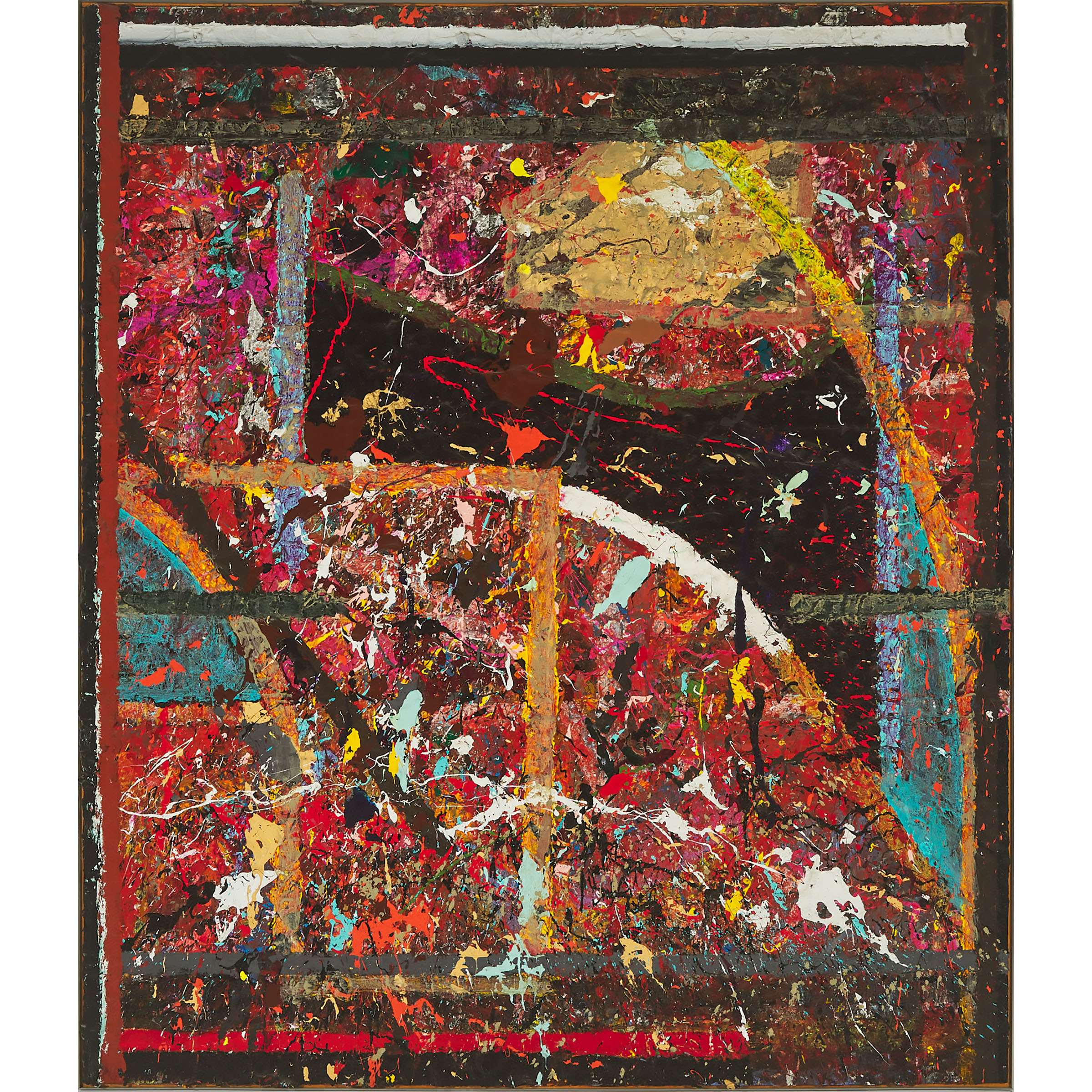Lot 575
Harold Klunder, RCA (b. 1943), Canadian

Lot 575 Details
Harold Klunder, RCA (b. 1943), Canadian
BELL KRATER, 1976-1979
acrylic, acrylic gel, and metallic powders on canvas
signed, titled, and dated verso; titled and dated to gallery label verso
84.5 x 72 in — 214.6 x 182.9 cm
Estimate $12,000-$15,000
Additional Images

Provenance:
Sable-Castelli Gallery, Toronto, ON;
Private Collection, Toronto, ON;
Private Collection, Toronto, ON
Note:
Harold Klunder made an indelible contribution to Canadian painting in the past half-century, and within his œuvre, Bell Krater is an exemplary work. In Canada, as elsewhere, painting during the middle-1970s was stylistically diverse. Faithfully rendered image-based paintings by the likes of Alex Colville and Ken Danby held great appeal, and large abstractions by Jack Bush (1909-1977) and William Perehudoff (1918-2013) reflected an understanding of critic Clement Greenberg’s ideas of form. Among the upstarts interested in image-based painting, Paterson Ewen (1925-2002) and Shirley Wiitasalo (b. 1943) employed radically different languages of image and narrative. Abstract painters such as Klunder and Ron Martin (b. 1943) took painting to its fundamentals. Where Martin went back to first principles and continued to probe painting’s ontology, Klunder stripped down painting and built it anew.
In the three years prior, Klunder had made paintings with a “cacophony” of shapes, lines and painterly gestures that defied easy organisation. [1] Unlike the abstractions in tune with Greenberg, Klunder’s was about the paint more than the image. In composition and palette Bell Krater has a family resemblance with the Art Gallery of Ontario’s Gate Fold (1976). Building upon that armature Klunder built layers of paint mixed with acrylic gel and metallic powders. The further addition of metallic powders softened the acrylic’s plastic tones, creating new visual effects and demanding a dynamic viewing experience while the gel provided translucence. In the four years of Bell Krater’s making, Klunder’s frustration with the limits of acrylic paint peaked as he found new potential in painting. The literal, visual and emotional build-up of Bell Krater is a tremendous moment in Klunder’s work of the 1970s, the apex of the first chapter in Klunder’s more than 50-year career, and high mark of Canadian painting in the 1970s.
[1] Roald Nasgaard, Abstract Painting in Canada (Vancouver: Douglas & McIntyre; Halifax: Art Gallery of Nova Scotia, 2007): 265.




